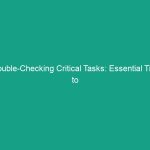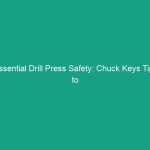Introduction
In today’s fast-paced industrial Environment, workplace Safety is paramount. The Health, Safety, and Environment (HSE) framework is designed to protect employees from Hazards that could jeopardize their health and well-being. One of the most overlooked aspects of Workplace Safety is hearing protection. This article delves into the significance of earplugs and earmuffs, discussing their role in safeguarding hearing health, compliance with Regulations, and Best Practices for implementation.
Understanding Noise-Induced Hearing Loss
Noisy environments are a common feature in many workplaces, from construction sites to manufacturing plants. Prolonged exposure to high noise levels can lead to Noise-Induced Hearing Loss (NIHL), a permanent condition that significantly impacts an individual’s quality of life. NIHL is often preventable, making education and awareness critical components of Workplace Safety.
The Mechanics of Hearing Loss
Hearing loss occurs when the tiny hair cells in the inner ear are damaged due to excessive noise. These hair cells do not regenerate, which means once they are damaged, the hearing loss is irreversible. Research indicates that noise levels above 85 decibels (dB) can cause harm, particularly with prolonged exposure. This emphasizes the significance of earplugs and earmuffs in mitigating these risks.
Statistics on Hearing Loss
According to the World Health Organization (WHO), around 1.1 billion young people are at risk of hearing loss due to unsafe listening practices. In occupational settings, the U.S. Bureau of Labor Statistics reports that nearly 22 million workers are exposed to hazardous noise levels each year. These statistics highlight the urgent need for effective hearing protection.
Regulatory Frameworks for Hearing Protection
Regulatory bodies have established guidelines to protect workers from the dangers of excessive noise exposure. These regulations are designed to minimize the risk of hearing loss and ensure that employers provide adequate protective measures.
OSHA Standards
The Occupational Safety and Health Administration (osha) sets forth regulations requiring employers to implement a Hearing Conservation Program when noise levels exceed 85 dB over an 8-hour time-weighted average. Key components of this program include:
- Monitoring noise levels in the workplace.
- Providing hearing protection, such as earplugs and earmuffs.
- Conducting regular hearing tests for employees.
- Training employees on the risks of noise exposure and the importance of hearing protection.
Other International Standards
Besides OSHA, other organizations such as the National Institute for Occupational Safety and Health (NIOSH) and the American National Standards Institute (ANSI) offer guidelines and recommendations for hearing conservation. These standards help ensure that Best Practices are followed globally, reinforcing the significance of earplugs and earmuffs in various industrial settings.
Best Practices for Implementing Hearing Protection
To effectively safeguard hearing health, organizations must adopt comprehensive strategies for implementing hearing protection measures. This involves not only providing the right equipment but also fostering a culture of safety among employees.
Assessing Noise Levels
The first step in any hearing conservation program is to assess the noise levels within the workplace. Employers should conduct regular noise surveys to identify areas where noise exposure exceeds safe limits. This data will guide decisions regarding the appropriate type of hearing protection required.
Selecting the Right Protection
Choosing the appropriate hearing protection is crucial for its effectiveness. Earplugs and earmuffs come in various styles and levels of protection, catering to different workplace environments. Factors to consider include:
- The noise reduction rating (NRR) of the device.
- The comfort and fit for the user.
- The specific noise exposure levels in the workplace.
Training and Education
Training employees on the proper use of earplugs and earmuffs is essential. Workers should be educated about the risks associated with noise exposure and how to use and maintain their hearing protection devices effectively. Regular Training sessions can reinforce the importance of hearing conservation and encourage compliance.
Regular Maintenance and Replacement
Hearing protection devices must be maintained and replaced regularly to ensure their effectiveness. Employers should establish a schedule for inspecting and replacing earplugs and earmuffs as needed. Employees should be encouraged to report any damage or discomfort related to their hearing protection.
Case Studies: Success Stories in Hearing Conservation
Many organizations have successfully implemented hearing conservation programs, showcasing the significant impact of earplugs and earmuffs on Workplace Safety.
Case Study 1: Construction Industry
A large construction firm faced a challenge with high noise levels on job sites. After conducting a thorough assessment, they implemented a comprehensive Hearing Conservation Program. This included regular noise monitoring, providing high-quality earplugs and earmuffs, and conducting training sessions. As a result, the company reported a 30% decrease in hearing-related incidents over two years, illustrating the significance of earplugs and earmuffs in protecting workers.
Case Study 2: Manufacturing Sector
A manufacturing facility recognized the need to address rising complaints of hearing loss among employees. They introduced a proactive approach by investing in better hearing protection and engaging workers in the decision-making process regarding the selection of equipment. Furthermore, they offered incentives for employees who consistently wore their hearing protection. Over time, the facility achieved a significant reduction in noise-related health issues, emphasizing the vital role of Workplace Safety initiatives.
Challenges in Hearing Conservation
Despite the clear advantages of hearing protection, several challenges persist in effectively implementing these measures within workplaces.
Employee Compliance
One of the most significant challenges is ensuring employee compliance with hearing protection protocols. Many workers may neglect to wear earplugs or earmuffs due to discomfort or inconvenience. To overcome this, employers must emphasize the importance of hearing protection and involve employees in selecting the devices that best suit their needs.
Cost Considerations
While investing in high-quality hearing protection and training programs may require upfront costs, the long-term Benefits of preventing hearing loss far outweigh these expenses. Companies should view hearing conservation as a vital investment in their workforce’s health, ultimately leading to increased productivity and reduced healthcare costs.
Future Trends in Hearing Protection
As technology advances, the future of hearing protection looks promising. Innovations in earplug and earmuff design aim to enhance comfort, usability, and effectiveness.
Smart Hearing Protection
Emerging technologies have introduced smart hearing protection devices that can adapt to varying noise levels. These devices offer real-time monitoring and feedback, allowing users to adjust their level of hearing protection based on their environment. This advancement represents a significant leap forward in ensuring that employees are protected while still able to communicate and engage in their work effectively.
Personalized Solutions
Another trend is the shift towards personalized hearing protection. Companies are increasingly recognizing the importance of individual comfort and fit. Custom-molded earplugs, for instance, offer a tailored solution that improves compliance and overall effectiveness. As these personalized options become more accessible, we can expect a positive impact on hearing conservation practices across various industries.
Conclusion
In summary, the significance of earplugs and earmuffs in Workplace Safety cannot be overstated. With noise-induced hearing loss being a preventable condition, organizations must prioritize effective hearing conservation strategies. By understanding noise exposure risks, adhering to regulatory frameworks, and implementing best practices, workplaces can protect their most valuable asset—their employees. It is crucial for employers to foster a culture of safety that emphasizes the importance of hearing protection. Let us commit to creating safer workplaces by taking proactive steps towards hearing conservation.


